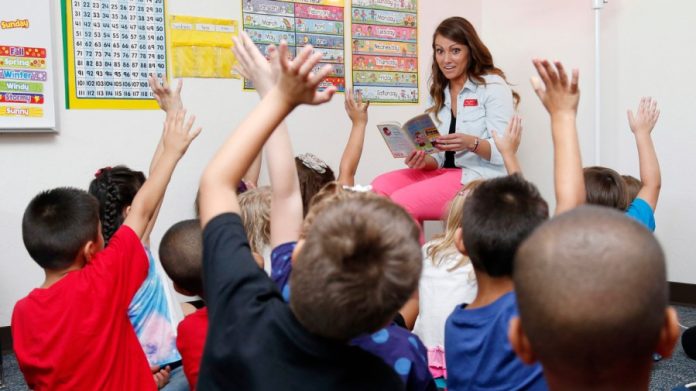
In January 2024, Ann Arbor Public Schools became the first public school district in the country to pass a resolution calling for a cease-fire in Gaza.
Regardless of one’s stance on the conflict, the resolution marked a troubling shift: A public K-12 school district was taking an official position on a deeply divisive geopolitical issue.
As a parent advocate in Ann Arbor concerned about my children’s schools providing an inclusive and high quality education, I was struck not only by the content of the resolution but by the precedent it set — one that risks politicizing our classrooms and alienating families.
What we have seen in K-12 education in the last several years mirrors the ideological shifts on college campuses, in which institutions of higher learning promote specific politicized viewpoints to both the student body and the outside world.
To counter the growing trend of universities taking official positions on a wide variety of divisive social and political issues particularly after Oct. 7, 2023, a number of leading universities, including the University of Michigan, Northwestern University and the University of Pennsylvania finally embraced the principle of institutional neutrality first articulated in the 1967 Kalven Report at the University of Chicago.
These institutions now recognize that taking official stances on controversial political or social issues undermines academic freedom and chills open inquiry. Instead, they have now committed to remaining neutral with the goal of improving their ability to allow diverse viewpoints to flourish.
As the Kalven Report posited, “the university is the home and sponsor of critics; it is not itself the critic.”
In the K-12 context, neutrality is even more essential. K-12 students are still forming their understanding of the world.
When a school district, administrator or teacher takes a political stance, it risks pushing impressionable young minds to conform, stifling freedom of thought and marginalizing dissenting voices.
The San Francisco District agrees: “When at work, [district] employees hold a unique position of influence of students in their care, and this influence is a privilege.”
When teachers take political positions, it can undermine the ability of students to develop critical thinking skills, distract from building core educational skills and lead to declines in academic outcomes.
As my colleague David Bernstein explained, “When U.S. K-12 schools invest valuable time and resources into politicizing the classroom … actual educational outcomes suffer.”
According to the most recent Nation’s Report Card, reading proficiency scores for U.S. students in grades four and eight have declined since 2019 with 69 percent of fourth and 70 percent of eighth graders performing below proficient levels.
Not only is neutrality a wise academic practice, it is also legally sound. Public schools, as government institutions, are entitled to limit educators’ speech in the classroom to serve the greater good of academic focus.
As the National Education Association, the largest teachers union in the country, rightly points out, “When the government is a public school or university, it has broad authority to limit educators’ speech on the job as well as to limit speech off the job that directly impacts the workplace.”
And unlike universities, where students are there by choice, K-12 schoolchildren are there by law.
As the Supreme Court recently explained in Mahmoud v. Taylor, the majority of K-12 children attend public, government-run schools “either by choice or necessity.” And, as public institutions, these schools must not take sides.
Just as our constitutional principles resist religious indoctrination in schools, so too should we resist ideological indoctrination.
A K-12 school system that adopts institutional neutrality empowers parents to advocate for policies that keep schools focused on education, not activism.
This is not about silencing discussion. On the contrary, neutrality creates the conditions for genuine dialogue by ensuring that no single viewpoint is institutionally endorsed. It affirms that schools exist to educate, not indoctrinate.
Across the country, in places like San Francisco and Chicago, parents and school leaders are waking up to the dangers of politicized classrooms.They know we must continue demanding schools return to their core mission: educating, not indoctrinating.
By organizing around shared values of freedom, opportunity, inclusion and unity, we can restore trust in public education and ensure that every child is taught how to think, not what to think.
Institutional neutrality isn’t just a policy, it’s a promise to our children that their schools will be inclusive places of learning, not battlegrounds of ideology. The future of our democracy depends on it.
Sharon Ceresnie Sorkin is the director of Community Engagement at North American Values Institute.

